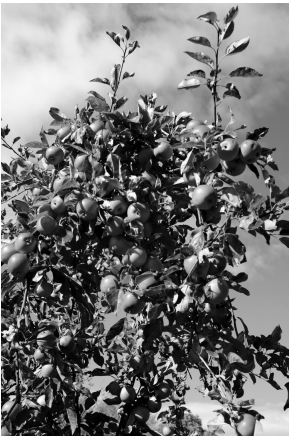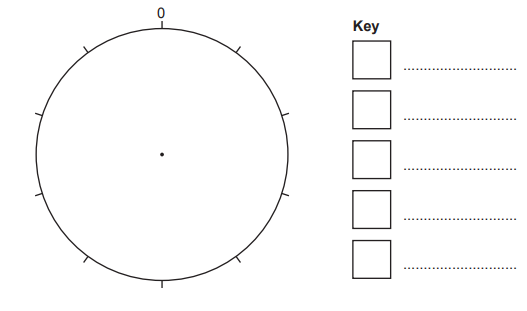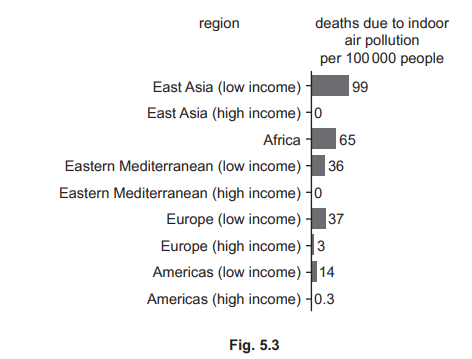A soil scientist wants to find out if soil near an e-waste landfill site is contaminated with lead.
The scientist collects 500 g of soil from five sampling sites.
Fig. 1.1 shows the location of the five sampling sites.

Fig 1.1
The scientist considers two methods, A and B, for obtaining soil samples for analysis.
method A
Remove any stones, animals or plant material from each 500 g soil sample.
Put 100 g of soil from each of the five soil samples into a large plastic bucket and mix the soil thoroughly.
Remove 100 g of mixed soil from the bucket and put in a clean plastic bag.
Test this sample of soil for lead.
method B
Remove any stones, animals or plant material from each 500 g soil sample.
Put 100 g of soil from the sample collected at site 1 into a clean plastic bag.
Test this sample of soil for lead.
Repeat steps 2 and 3 for the other sampling sites.
(i) Suggest one advantage of using method A compared with method B.
[1]
(ii) Suggest one limitation of using method A compared with method B.
[1]
(iii) Suggest one reason why plant material is removed from the 500 g soil samples.
[1]
Did this page help you?



